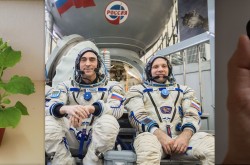Disappearing Storms on Neptune
Transcript
Back in 2015, using the Hubble Space Telescope, astronomers discovered a massive storm on Neptune. Today - almost three years later – it’s all but disappeared, leaving us all trying to figure out what happened.
Neptune is 30 times farther away from the Sun than we are, and because of that it’s difficult to visit. In fact, Neptune has only ever been seen up-close once: back in 1989 when the Voyager 2 probe flew by. Upon arrival, Voyager 2 discovered a massive storm and we called it the Great Dark Spot. The storm was the size of Earth and was tearing up the southern latitudes of Neptune, with winds topping 2,500 km/h.
However, when follow-up observations of the Great Dark Spot were done by Hubble in 1994, it had disappeared! And since then, multiple storms on Neptune have appeared, only to disappear from view in later observations. The most recent storm was discovered in 2015, but thanks to more frequent imaging of the outer planets, Scientists have actually been able to watch as the storm fades away.
Cyclonic storms are actually common in the Solar system; Earth certainly has them. Jupiter is famous for its Great Red Spot; and Saturn has a massive storm that appears semi-periodically.
In the case of Neptune, its disappearing storm is dredging up material from deeper in the atmosphere, allowing us to study the internal composition of Neptune in greater detail. Also the storm has drifted towards the southern pole which might indicate that windshear from jet-stream like wind patterns is the culprit of the storm fizzling out.
For the gas giant planets, the evolution of storms like these over multiple years of observation is a very valuable tool that teaches about an atmosphere that would otherwise be shrouded in mystery.



























